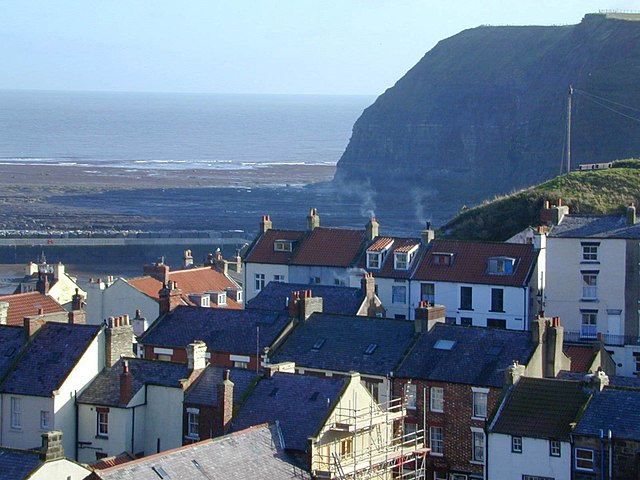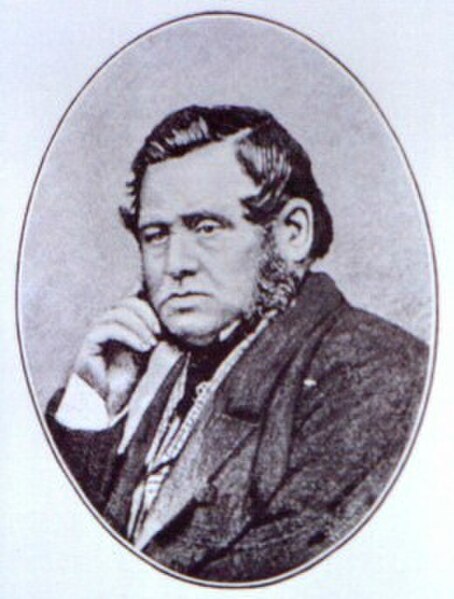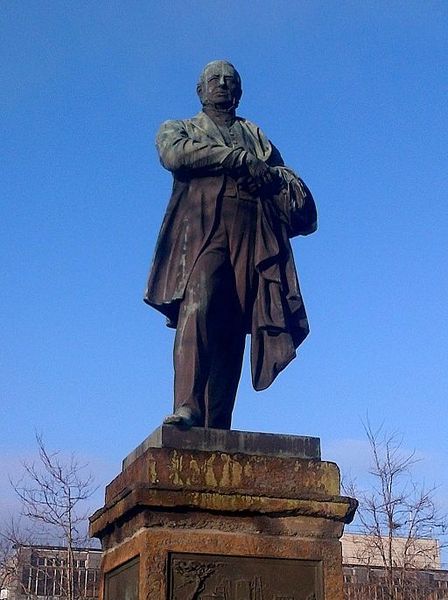Cleveland Ironstone Formation
The Cleveland Ironstone Formation is a sequence of marine ironstone seams interbedded with shale and siltstone units which collectively form a part of the Lower Jurassic System of rocks underlying Cleveland in North Yorkshire. Exploitation of the ironstone seams became a major driving force behind the industrialisation of the Teesside district during the mid- to late-1800s.
Exposure of the Cleveland Ironstone Formation near Skinningrove
Image of Staithes showing part of the village (foreground), the east-side harbour wall (middle left) and the headland of Penny Nab (centre background). The base of the Cleveland Ironstone commences at the foot of the cliff.
Seams of the Cleveland Ironstone formation well exposed on the coast at Jet Wyke. The Avicula seam forms the rock platform. Above it come the Raisdale, Two Foot, Pecten (5 thin bands) and Main seams
Close-up of a sample of Cleveland ironstone from Kilton Mine demonstrating the rock's oolitic texture.
John Vaughan (ironmaster)
John Vaughan, known as Jacky, was born in Worcester on "St Thomas' Day" in 1799, the son of Welsh parents. He worked his way up the iron industry, becoming an ironmaster and co-founder of the largest of all the Victorian iron and steel companies, Bolckow Vaughan. Where Henry Bolckow provided the investment and business expertise, Vaughan contributed technical knowledge, in a long-lasting and successful partnership that transformed Middlesbrough from a small town to the centre of ironmaking in Britain.
John Vaughan (ironmaster)
Monument to John Vaughan by George Anderson Lawson in Middlesbrough. The inscription reads: 'John Vaughan 1799–1868 Mayor of Middlesbrough 1855 discovered ironstone in the Cleveland hills founder of the iron trade in Middlesbrough. Partner of Bolckow, Vaughan & Co. who built one of the first iron works in Middlesbrough in 1840.'






